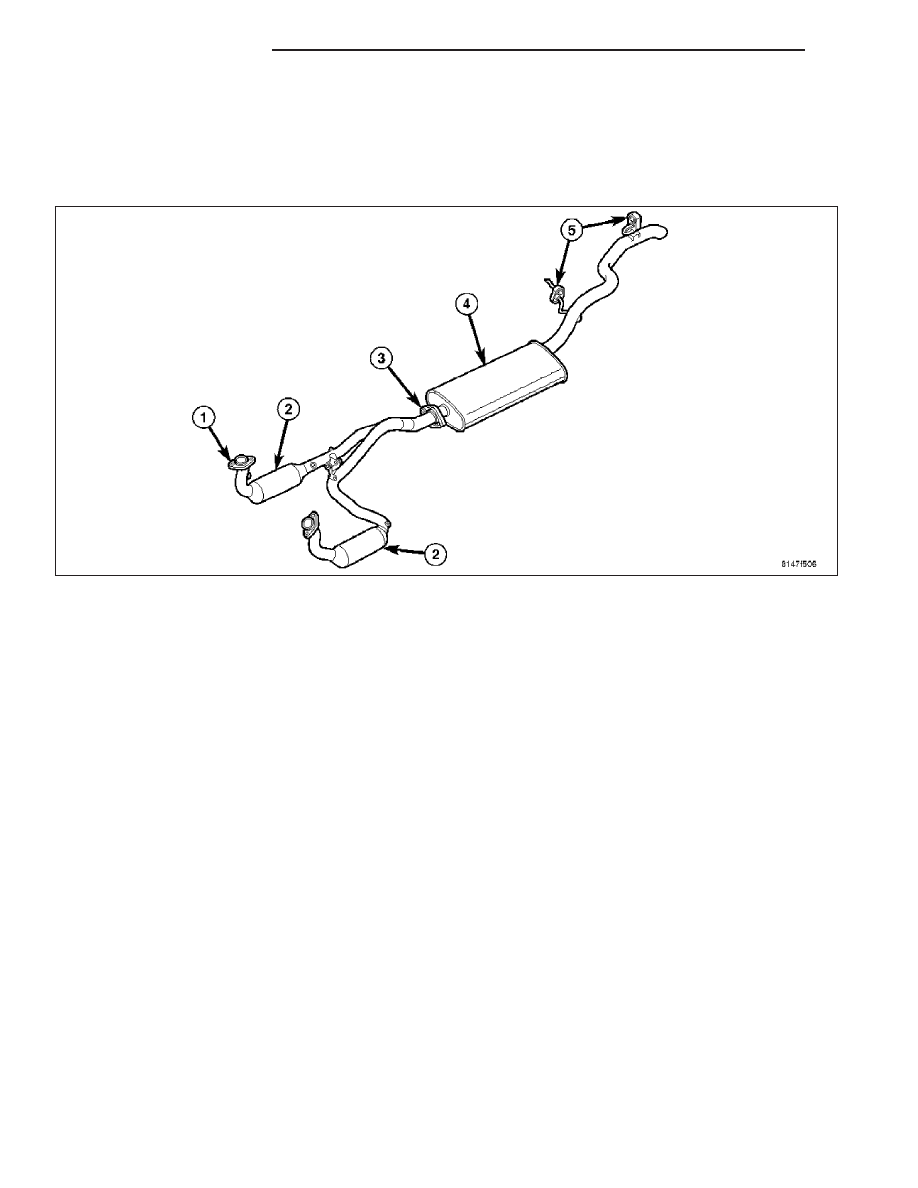Jeep Liberty KJ. Manual - part 934

EXHAUST SYSTEM AND TURBOCHARGER
DESCRIPTION
GAS ENGINES
The basic exhaust system consists of a exhaust pipe assembly with catalytic converters (2), muffler (4) and tailpipe
assembly and heat shields.
The exhaust system must be properly aligned to prevent stress, leakage and body contact. Minimum clearance
between any exhaust component and the body or frame is 25 mm (1.0 in.). If the system contacts any body panel,
it may amplify objectionable noises from the engine or body.
When inspecting an exhaust system, critically inspect for cracked or loose joints, stripped screw or bolt threads,
corrosion damage and worn, cracked or broken hangers. Replace all components that are badly corroded or dam-
aged. DO NOT attempt to repair.
When replacement is required, use original equipment parts (or equivalent). This will assure proper engine function
and system alignment.
CAUTION: Avoid application of rust prevention compounds or undercoating materials to exhaust system
floor pan exhaust heat shields. Light overspray near the edges is permitted. Application of coating will
result in excessive floor pan temperatures and objectionable fumes.
2.8L DIESEL
CAUTION: Avoid application of rust prevention compounds or undercoating materials to exhaust system
floor pan exhaust heat shields. Light overspray near the edges is permitted. Application of coating will
result in excessive floor pan temperatures and objectionable fumes.
The diesel engine exhaust system consists of an engine exhaust manifold, turbocharger, EGR valve with intercooler,
front exhaust pipe with catalytic converter, muffler and tailpipe assembly.
The exhaust system must be properly aligned to prevent stress, leakage and body contact. The exhaust compo-
nents should be kept a minimum of 25.4 mm (1.0 in.) away from the body and frame. If the system contacts any
body panel, it may amplify objectionable noises from the engine or body.
11 - 2
EXHAUST SYSTEM
KJ